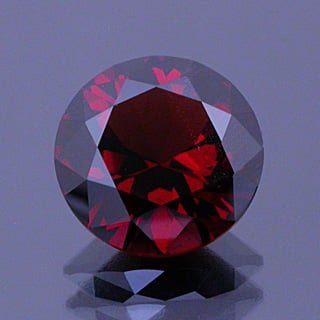The Spectroscope
The spectroscope is a fundamental gemological tool. Learn how to use it to identify gemstones based on their absorption of different wavelengths of light.
14 Minute Read
The spectroscope is also a great asset for examining rough gems, when getting RI readings is difficult, and detecting some treatments. In some cases, only a spectroscope can detect if a gem’s color is natural, dyed, or irradiated.
As with all the other instruments in your gemology lab, practice makes mastery. The more you use your spectroscope, the more you’ll learn to see. Soon, you’ll find yourself conducting tests quickly and easily.
What Does a Spectroscope Show?
Selective Absorption
Natural, white light contains all the hues of the rainbow. Colored gemstones absorb some of the light that passes through them or reflect it from their surface. This process is called selective absorption.
A spectroscope will show you the wavelengths of light emitted, or reflected, from a gem. The absorbed wavelengths of light, on the other hand, will appear as a darker shade of color or black. Since some absorption patterns are distinctive, they prove useful for gem identification.
Light Measurements
When using a spectroscope, we need to define light wavelengths in precise units.
In the mid 1800s, Anders Jonas Ångström, a Swedish pioneer in physics, developed the…
Donald Clark, CSM IMG
Donald Clark, CSM founded the International Gem Society in 1998. Donald started in the gem and jewelry industry in 1976. He received his formal gemology training from the Gemological Institute of America (GIA) and the American Society of Gemcutters (ASG). The letters “CSM” after his name stood for Certified Supreme Master Gemcutter, a designation of Wykoff’s ASG which has often been referred to as the doctorate of gem cutting. The American Society of Gemcutters only had 54 people reach this level. Along with dozens of articles for leading trade magazines, Donald authored the book “Modern Faceting, the Easy Way.”
Related Articles
Learn to Use the Spectroscope (Video)
Learn to Use a Refractometer (Video)
Interview with Gemology Tools Expert Cara Williams
10X Loupe for Gemologists and Jewelers
Latest Articles
800 Years of Mogok: A Celebration in Tenuous Times
What is the Average Gemstone Faceting Yield?
Pyroxmangite Value, Price, and Jewelry Information
How to Identify Emerald Simulants and Synthetics
Never Stop Learning
When you join the IGS community, you get trusted diamond & gemstone information when you need it.
Get Gemology Insights
Get started with the International Gem Society’s free guide to gemstone identification. Join our weekly newsletter & get a free copy of the Gem ID Checklist!
